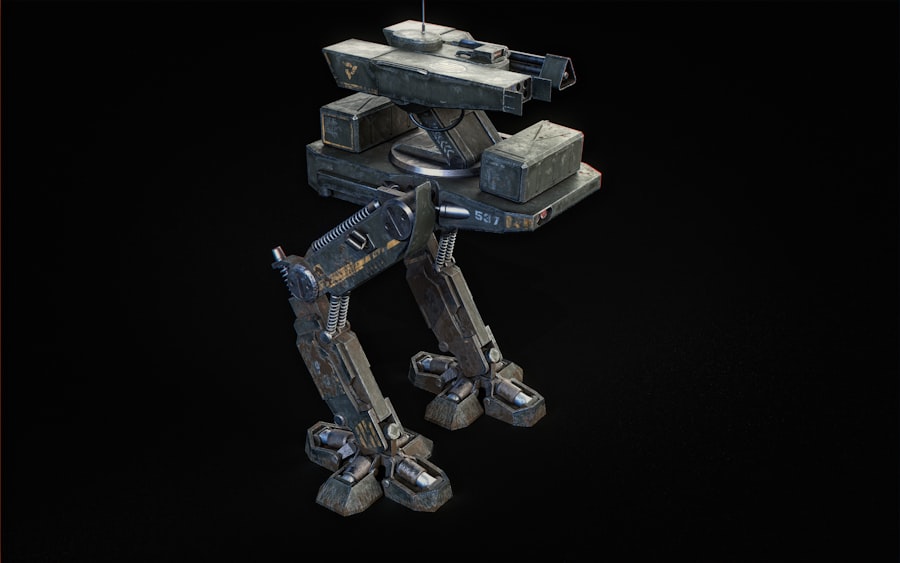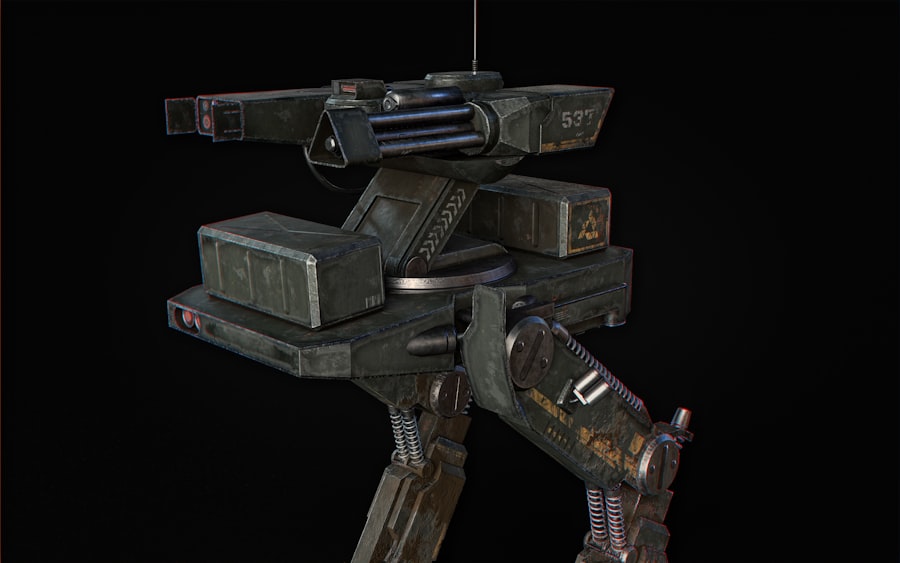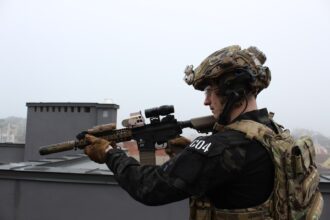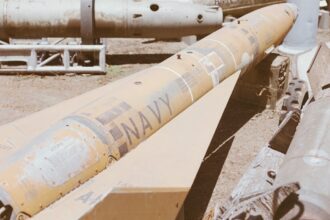In the contemporary landscape of warfare, the integration of civilian technology into military operations has emerged as a pivotal factor in driving innovation. The rapid advancement of technology in civilian sectors, particularly in areas such as communication, data analytics, and artificial intelligence, has provided militaries around the world with new tools and methodologies to enhance their operational capabilities. This convergence of civilian and military technology not only fosters efficiency but also enables armed forces to adapt to the evolving nature of conflict, characterized by asymmetric threats and cyber warfare.
The role of civilian technology in military innovation is multifaceted. It encompasses the adaptation of existing technologies for military use, the development of new systems inspired by civilian innovations, and the collaboration between civilian tech companies and defense organizations. As militaries strive to maintain a competitive edge, they increasingly look beyond traditional defense contractors to harness the ingenuity and creativity found in the civilian sector.
This shift not only accelerates technological advancement but also democratizes innovation, allowing for a broader range of ideas and solutions to emerge in the defense arena.
Key Takeaways
- Civilian technology plays a crucial role in driving military innovation and modernization.
- Adapting civilian tech for warfare offers advantages such as cost-effectiveness, rapid development, and access to cutting-edge capabilities.
- Successful examples of civilian technology adaptation in military operations include the use of drones, GPS, and advanced communication systems.
- Challenges and limitations in adapting civilian tech for warfare include cybersecurity vulnerabilities, interoperability issues, and ethical concerns.
- The impact of civilian technology on military strategy and tactics is significant, leading to changes in warfare tactics, intelligence gathering, and precision targeting.
The Advantages of Adapting Civilian Tech for Warfare
One of the primary advantages of adapting civilian technology for military purposes is cost-effectiveness. Civilian technologies often benefit from economies of scale, as they are produced for mass markets rather than specialized military applications. This can lead to significant savings for defense budgets, allowing militaries to allocate resources more efficiently.
For instance, the widespread use of commercial off-the-shelf (COTS) products enables armed forces to procure advanced systems without incurring the high costs associated with bespoke military designs. Moreover, civilian technologies tend to evolve at a much faster pace than traditional military systems. The rapid innovation cycles seen in the tech industry mean that militaries can access cutting-edge solutions that are continuously being refined and improved.
This agility allows armed forces to remain responsive to emerging threats and challenges, ensuring that they are not left behind in an era where technological superiority can dictate the outcome of conflicts. By leveraging civilian advancements, militaries can enhance their operational readiness and effectiveness on the battlefield.
Examples of Successful Adaptations of Civilian Technology in Military Operations

Numerous examples illustrate the successful adaptation of civilian technology for military operations. One notable instance is the use of drones, originally developed for commercial purposes, which have been repurposed for reconnaissance and combat missions. The proliferation of unmanned aerial vehicles (UAVs) has transformed modern warfare, enabling forces to conduct surveillance and strike operations with unprecedented precision while minimizing risk to personnel.
The adaptability of drone technology exemplifies how civilian innovations can be effectively harnessed to meet military needs. Another significant example is the integration of social media analytics into military intelligence operations. Armed forces have begun utilizing tools originally designed for civilian use to monitor public sentiment and gather real-time information from social media platforms.
This capability has proven invaluable in conflict zones, where understanding local dynamics can inform strategic decision-making. By tapping into civilian technology, militaries can enhance their situational awareness and improve their ability to respond to rapidly changing environments.
Challenges and Limitations of Adapting Civilian Tech for Warfare
| Challenges and Limitations | Adapting Civilian Tech for Warfare |
|---|---|
| 1 | Lack of ruggedness and durability |
| 2 | Integration with existing military systems |
| 3 | Cybersecurity vulnerabilities |
| 4 | Regulatory and legal challenges |
| 5 | Training and re-skilling of military personnel |
Despite the numerous advantages associated with adapting civilian technology for military use, several challenges and limitations must be addressed. One major concern is the issue of security and reliability. Civilian technologies may not be designed with the same level of robustness or security features required for military applications.
This can lead to vulnerabilities that adversaries could exploit, potentially compromising sensitive operations or data. As such, militaries must carefully assess the risks associated with integrating civilian technologies into their systems. Additionally, there is often a cultural divide between civilian tech companies and military organizations.
The pace and nature of innovation in the tech industry can clash with the more bureaucratic processes typically found within defense establishments. This disconnect can hinder collaboration and slow down the adoption of new technologies. To overcome these challenges, it is essential for both sectors to foster a culture of mutual understanding and cooperation, ensuring that innovations can be effectively translated into military applications.
The Impact of Civilian Technology on Military Strategy and Tactics
The integration of civilian technology into military operations has fundamentally altered strategies and tactics employed by armed forces. The ability to leverage advanced data analytics and artificial intelligence has enabled militaries to make more informed decisions based on real-time information. This shift towards data-driven decision-making allows for greater precision in targeting and resource allocation, ultimately enhancing operational effectiveness.
Furthermore, civilian technology has facilitated new forms of warfare that emphasize speed and agility. The rise of cyber warfare, for instance, has transformed traditional notions of conflict by introducing new battlegrounds that exist within digital spaces. As militaries adapt to these changes, they must develop strategies that account for both kinetic and non-kinetic threats, ensuring that they are prepared to engage adversaries across multiple domains.
Ethical and Legal Considerations in the Use of Civilian Technology for Warfare

The adaptation of civilian technology for military purposes raises important ethical and legal considerations that must be carefully navigated. One significant concern is the potential for misuse or unintended consequences resulting from the deployment of advanced technologies in combat scenarios. For example, autonomous weapons systems powered by artificial intelligence may operate without human intervention, leading to ethical dilemmas regarding accountability and decision-making in life-and-death situations.
Moreover, the use of civilian technologies in warfare can blur the lines between combatants and non-combatants, particularly in urban environments where civilians may be inadvertently affected by military operations. This raises questions about compliance with international humanitarian law and the responsibility of armed forces to protect civilian lives during conflicts. As militaries increasingly rely on civilian innovations, it is crucial that they adhere to ethical standards and legal frameworks that govern warfare.
The Future of Military Innovation: Integrating Civilian Technology into Defense Systems
Looking ahead, the future of military innovation will likely hinge on the continued integration of civilian technology into defense systems. As technological advancements accelerate, militaries must remain agile and adaptable, embracing new tools that can enhance their capabilities. This will require a proactive approach to research and development, as well as a willingness to collaborate with civilian tech companies to explore innovative solutions.
The potential for breakthroughs in areas such as artificial intelligence, machine learning, and quantum computing presents exciting opportunities for military applications. By fostering an environment conducive to experimentation and collaboration, defense organizations can harness these advancements to create more effective and efficient systems that meet the demands of modern warfare.
The Role of Public-Private Partnerships in Driving Military Innovation
Public-private partnerships (PPPs) play a crucial role in driving military innovation through the integration of civilian technology. These collaborations enable defense organizations to tap into the expertise and resources of private sector companies while providing businesses with access to government contracts and funding opportunities. By working together, both sectors can accelerate technological advancements that benefit national security.
Successful PPPs have already demonstrated their potential in various domains, from cybersecurity initiatives to advanced manufacturing techniques. By fostering an ecosystem where ideas can flow freely between public and private entities, militaries can leverage the creativity and agility found in the tech industry while ensuring that innovations align with defense objectives.
The Importance of Research and Development in Adapting Civilian Tech for Warfare
Research and development (R&D) is essential for adapting civilian technology for military applications effectively. Investing in R&D allows defense organizations to explore new ideas, test emerging technologies, and refine existing systems to meet specific operational needs. This commitment to innovation ensures that militaries remain at the forefront of technological advancements while addressing potential challenges associated with integrating civilian solutions.
Moreover, R&D efforts can facilitate knowledge transfer between civilian tech companies and military organizations.
This synergy not only enhances operational capabilities but also promotes a culture of continuous improvement within both domains.
The Potential Risks and Consequences of Military Dependence on Civilian Technology
While the integration of civilian technology into military operations offers numerous benefits, it also presents potential risks and consequences that must be carefully considered. One significant concern is the over-reliance on commercial technologies that may not be designed with military-grade specifications or security features. Such dependence could leave armed forces vulnerable to disruptions or failures during critical operations.
Additionally, as militaries increasingly adopt civilian technologies, they may inadvertently create a dependency on external suppliers for essential capabilities. This reliance could pose challenges during times of conflict when access to commercial products may be restricted or compromised. To mitigate these risks, it is essential for defense organizations to maintain a balanced approach that combines both civilian innovations with robust internal capabilities.
The Need for Continued Adaptation and Innovation in Military Technology
In conclusion, the integration of civilian technology into military operations represents a transformative shift in how armed forces approach innovation and warfare. While there are numerous advantages associated with this adaptation—such as cost-effectiveness, rapid advancements, and enhanced operational capabilities—militaries must also navigate challenges related to security, ethics, and dependency on external technologies. As conflicts continue to evolve in complexity and scope, it is imperative that militaries remain committed to continuous adaptation and innovation in their technological approaches.
By fostering collaboration between public and private sectors, investing in research and development, and addressing ethical considerations head-on, armed forces can harness the full potential of civilian technology while ensuring that they are prepared for future challenges on the battlefield.
In recent years, the adaptation of civilian technology for military purposes has become increasingly prevalent, highlighting the blurred lines between consumer tech and defense applications. A related article on this topic can be found on the website “In The War Room,” which delves into various instances where everyday technology has been repurposed for warfare. This insightful piece explores the implications of such adaptations and the potential future of military technology. For more information, you can read the full article by visiting In The War Room.
FAQs
What is civilian tech adapted for warfare?
Civilian tech adapted for warfare refers to the use of technology originally developed for civilian purposes, such as communication, transportation, and medical devices, in military applications. This can include adapting commercial off-the-shelf (COTS) products for military use or repurposing existing technology for military operations.
What are some examples of civilian tech adapted for warfare?
Examples of civilian tech adapted for warfare include the use of commercial drones for military surveillance and reconnaissance, the adaptation of GPS technology for precision-guided munitions, and the use of commercial satellite communication systems for military communications.
What are the benefits of adapting civilian tech for warfare?
Adapting civilian tech for warfare can provide cost savings, as commercial products are often more affordable than custom military-specific technology. It can also lead to faster deployment of new capabilities, as civilian technology is often readily available and well-tested in the commercial market.
What are the challenges of adapting civilian tech for warfare?
Challenges of adapting civilian tech for warfare include ensuring compatibility with existing military systems, addressing security concerns, and overcoming regulatory and export control restrictions on certain types of technology. Additionally, civilian technology may not always meet the specific requirements and standards of military operations.
How is civilian tech adapted for warfare regulated?
The adaptation of civilian tech for warfare is regulated by government agencies responsible for export controls, such as the U.S. Department of State’s Directorate of Defense Trade Controls (DDTC) and the U.S. Department of Commerce’s Bureau of Industry and Security (BIS). These agencies oversee the export and transfer of military-related technology and equipment, including civilian tech adapted for warfare.




